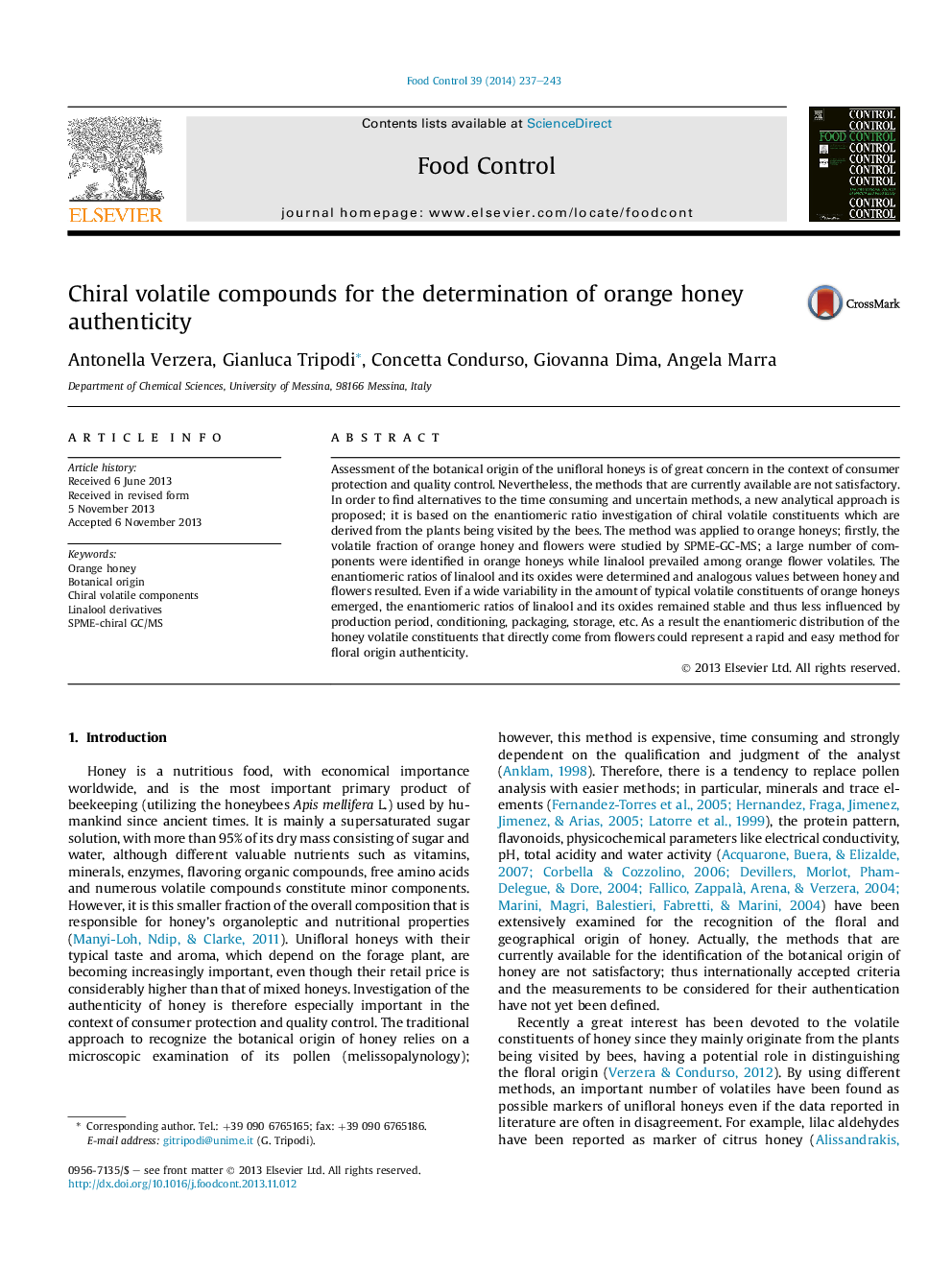| Article ID | Journal | Published Year | Pages | File Type |
|---|---|---|---|---|
| 6392018 | Food Control | 2014 | 7 Pages |
â¢A new analytical method for honey floral origin definition is proposed.â¢The method is based on the enantiomeric ratio determination of chiral volatile constituents.â¢The method was applied to the orange honey.â¢Orange honey and flower volatiles were analyzed by SPME-GC-MS.â¢Enantiomeric ratio of linalool allowed to evaluate the authenticity of the orange honey.
Assessment of the botanical origin of the unifloral honeys is of great concern in the context of consumer protection and quality control. Nevertheless, the methods that are currently available are not satisfactory. In order to find alternatives to the time consuming and uncertain methods, a new analytical approach is proposed; it is based on the enantiomeric ratio investigation of chiral volatile constituents which are derived from the plants being visited by the bees. The method was applied to orange honeys; firstly, the volatile fraction of orange honey and flowers were studied by SPME-GC-MS; a large number of components were identified in orange honeys while linalool prevailed among orange flower volatiles. The enantiomeric ratios of linalool and its oxides were determined and analogous values between honey and flowers resulted. Even if a wide variability in the amount of typical volatile constituents of orange honeys emerged, the enantiomeric ratios of linalool and its oxides remained stable and thus less influenced by production period, conditioning, packaging, storage, etc. As a result the enantiomeric distribution of the honey volatile constituents that directly come from flowers could represent a rapid and easy method for floral origin authenticity.
